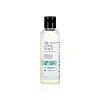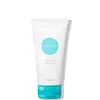What's inside
What's inside
 Key Ingredients
Key Ingredients

 Benefits
Benefits

 Concerns
Concerns

 Ingredients Side-by-side
Ingredients Side-by-side

Water
Skin ConditioningCocamidopropyl Betaine
CleansingSodium Methyl Cocoyl Taurate
CleansingSodium Methyl 2-Sulfolaurate
CleansingDisodium 2-Sulfolaurate
CleansingGlycerin
HumectantXylitylglucoside
HumectantAnhydroxylitol
HumectantXylitol
HumectantMaltooligosyl Glucoside
Skin ConditioningHydrogenated Starch Hydrolysate
HumectantSodium PCA
HumectantPanthenol
Skin ConditioningSodium Hyaluronate
HumectantProline
Skin ConditioningHydroxyproline
Skin ConditioningCaprylic/Capric Triglyceride
MaskingAcrylates/C10-30 Alkyl Acrylate Crosspolymer
Emulsion StabilisingTriethanolamine
BufferingEthylhexylglycerin
Skin ConditioningPhenoxyethanol
PreservativeSilica
AbrasiveBetaine
HumectantSodium Gluconate
Skin ConditioningHyaluronic Acid
HumectantWater, Cocamidopropyl Betaine, Sodium Methyl Cocoyl Taurate, Sodium Methyl 2-Sulfolaurate, Disodium 2-Sulfolaurate, Glycerin, Xylitylglucoside, Anhydroxylitol, Xylitol, Maltooligosyl Glucoside, Hydrogenated Starch Hydrolysate, Sodium PCA, Panthenol, Sodium Hyaluronate, Proline, Hydroxyproline, Caprylic/Capric Triglyceride, Acrylates/C10-30 Alkyl Acrylate Crosspolymer, Triethanolamine, Ethylhexylglycerin, Phenoxyethanol, Silica, Betaine, Sodium Gluconate, Hyaluronic Acid
Water
Skin ConditioningSynthetic Wax
AbrasiveGlycerin
HumectantDecyl Glucoside
CleansingSodium Cocoyl Isethionate
CleansingCocamidopropyl Betaine
CleansingAcrylates/C10-30 Alkyl Acrylate Crosspolymer
Emulsion StabilisingSodium Lauroamphoacetate
CleansingSodium Methyl Cocoyl Taurate
CleansingParfum
MaskingPhenoxyethanol
PreservativeCaprylyl Glycol
EmollientSodium PCA
HumectantPanthenol
Skin ConditioningSodium Hydroxide
BufferingChlorphenesin
AntimicrobialEthylhexylglycerin
Skin ConditioningHexylene Glycol
EmulsifyingDisodium EDTA
Sodium Hyaluronate
HumectantPapain
Skin ConditioningCarbomer
Emulsion Stabilising1,2-Hexanediol
Skin ConditioningAlgin
MaskingWater, Synthetic Wax, Glycerin, Decyl Glucoside, Sodium Cocoyl Isethionate, Cocamidopropyl Betaine, Acrylates/C10-30 Alkyl Acrylate Crosspolymer, Sodium Lauroamphoacetate, Sodium Methyl Cocoyl Taurate, Parfum, Phenoxyethanol, Caprylyl Glycol, Sodium PCA, Panthenol, Sodium Hydroxide, Chlorphenesin, Ethylhexylglycerin, Hexylene Glycol, Disodium EDTA, Sodium Hyaluronate, Papain, Carbomer, 1,2-Hexanediol, Algin
Ingredients Explained
These ingredients are found in both products.
Ingredients higher up in an ingredient list are typically present in a larger amount.
Acrylates/C10-30 Alkyl Acrylate Crosspolymer is a synthetic polymer. It is used to thicken and improve the texture of products. Due to its properties, it can prevent water and oil ingredients from separating.
Cocamidopropyl Betaine is a fatty acid created by mixing similar compounds in coconut oil and dimethylaminopropylamine, a compound with two amino groups.
This ingredient is a surfactant and cleanser. It helps gather the dirt, pollutants, and other impurities in your skin to be washed away. It also helps thicken a product and make the texture more creamy.
Being created from coconut oil means Cocamidopropyl Betaine is hydrating for the skin.
While Cocamidopropyl Betaine was believed to be an allergen, a study from 2012 disproved this. It found two compounds in unpure Cocamidopropyl Betaine to be the irritants: aminoamide and 3-dimethylaminopropylamine. High-grade and pure Cocamidopropyl Betaine did not induce allergic reactions during this study.
Learn more about Cocamidopropyl BetaineEthylhexylglycerin (we can't pronounce this either) is commonly used as a preservative and skin softener. It is derived from glyceryl.
You might see Ethylhexylglycerin often paired with other preservatives such as phenoxyethanol. Ethylhexylglycerin has been found to increase the effectiveness of these other preservatives.
Glycerin is already naturally found in your skin. It helps moisturize and protect your skin.
A study from 2016 found glycerin to be more effective as a humectant than AHAs and hyaluronic acid.
As a humectant, it helps the skin stay hydrated by pulling moisture to your skin. The low molecular weight of glycerin allows it to pull moisture into the deeper layers of your skin.
Hydrated skin improves your skin barrier; Your skin barrier helps protect against irritants and bacteria.
Glycerin has also been found to have antimicrobial and antiviral properties. Due to these properties, glycerin is often used in wound and burn treatments.
In cosmetics, glycerin is usually derived from plants such as soybean or palm. However, it can also be sourced from animals, such as tallow or animal fat.
This ingredient is organic, colorless, odorless, and non-toxic.
Glycerin is the name for this ingredient in American English. British English uses Glycerol/Glycerine.
Learn more about GlycerinPanthenol is a common ingredient that helps hydrate and soothe the skin. It is found naturally in our skin and hair.
There are two forms of panthenol: D and L.
D-panthenol is also known as dexpanthenol. Most cosmetics use dexpanthenol or a mixture of D and L-panthenol.
Panthenol is famous due to its ability to go deeper into the skin's layers. Using this ingredient has numerous pros (and no cons):
Like hyaluronic acid, panthenol is a humectant. Humectants are able to bind and hold large amounts of water to keep skin hydrated.
This ingredient works well for wound healing. It works by increasing tissue in the wound and helps close open wounds.
Once oxidized, panthenol converts to pantothenic acid. Panthothenic acid is found in all living cells.
This ingredient is also referred to as pro-vitamin B5.
Learn more about PanthenolPhenoxyethanol is a preservative that has germicide, antimicrobial, and aromatic properties. Studies show that phenoxyethanol can prevent microbial growth. By itself, it has a scent that is similar to that of a rose.
It's often used in formulations along with Caprylyl Glycol to preserve the shelf life of products.
Sodium Hyaluronate is hyaluronic acid's salt form. It is commonly derived from the sodium salt of hyaluronic acid.
Like hyaluronic acid, it is great at holding water and acts as a humectant. This makes it a great skin hydrating ingredient.
Sodium Hyaluronate is naturally occurring in our bodies and is mostly found in eye fluid and joints.
These are some other common types of Hyaluronic Acid:
Learn more about Sodium HyaluronateThis gentle cleansing and foaming ingredient is known for leaving a smooth feeling in skin and hair. It is made using coconut oil.
According to the manufacturer, it is soluble in water and has resistance to hard water, acid, and alkali.
Due to its coconut base, it may not be Malassezia folliculitis safe.
Learn more about Sodium Methyl Cocoyl TaurateSodium PCA is the sodium salt of pyroglutamic acid. It is naturally occurring in our skin's natural moisturizing factors where it works to maintain hydration.
The PCA stands for pyrrolidone carboxylic acid, a natural amino acid derivative.
This ingredient has skin conditioning, anti-inflammatory, and humectant properties. Humectants help hydrate your skin by drawing moisture from the air. This helps keep your skin moisturized.
Learn more about Sodium PCAWater. It's the most common cosmetic ingredient of all. You'll usually see it at the top of ingredient lists, meaning that it makes up the largest part of the product.
So why is it so popular? Water most often acts as a solvent - this means that it helps dissolve other ingredients into the formulation.
You'll also recognize water as that liquid we all need to stay alive. If you see this, drink a glass of water. Stay hydrated!
Learn more about Water